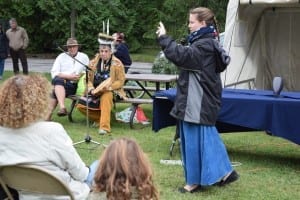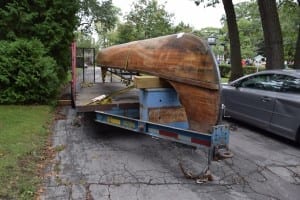Subdivided (2016) and Eliot Weinberger’s “The Creation” (2015) share reflections about sense-making
Subdivided: City-Building in an Age of Hyper-Diversity (2016) is a book that I encountered via social media and CBC Metro Morning (and maybe elsewhere on CBC Radio) some time back. I like the way it’s been publicized on radio and via social media.
A chapter from the book was published in The Walrus; I’ve highlighted it in a recent post:
To what extent do neighbourhood Facebook groups serve as virtual gated communities?
Unspoken notions of economic and social capital
A key point in the Introduction to Subdivided (2016) concerns the fact that the concept of diversity, widely used in urban planning discussions, has some problematic characteristics (p. 7):
“Unspoken notions of power, differently valued bodies, spatial entitlement, and economic and social capital are all implicit in aterm we have come to consider virtuous.”
The Introduction adds:

The photo is from a blog post entitled: “Étienne Brûlé / First Nations event took place on Sept. 13, 2015 at 222 Riverside Drive.” See link at bottom of page you are now reading. Jaan Pill photo
“Using this flawed framework, which reinforces rather than redresses social power dynamics, we’ve developed public policy, business-based programs and mandated workplace training to increase our collective capacity to deal with difference. In fact, diversity is so knitted into Canada’s national identity and its values that, for some, any critique of this rhetoric amounts to a challenge to our collective sense of respectability. But while we’ve been focused on embracing the identities of ‘others’ and celebrating their differences, the economic disparities between city dwellers – and not just in Canada – have greatly increased.
“In an urban context, accelerating income disparity has created an insidious form of social segregation within and across neighbourhoods. Here in Torono, the most culturally diverse city in the world, University of Toronto sociologist David Hulchanski’s ‘Three Cities’ research [2] has shown how, over the past two generations, wealthy and poor neighbourhoods have become increasingly concentrated and isolated from one another, producing a social geography that offers a ground-level rebuke to the redemptive rhetoric extolling the virtues of diversity.”

The photo is from a blog post entitled: “Étienne Brûlé / First Nations event took place on Sept. 13, 2015 at 222 Riverside Drive.” See link at bottom of page you are now reading. Jaan Pill photo
[End of excerpt]
I like this book and recommend it highly.
Little Star 6 2015
I came across a brief passage by Eliot Weinberger entitled “The Creation” in a print magazine that I read some time ago and made a point of buying Little Star 6, a Journal of Poetry and Prose (Sixth Issue, 2015), so that I could have a copy of the publication where it originally appeared.
As I understand, Weinberger’s brief passage is based on historical records; that is, as I understand, it’s not a story that he’s made up.
Briefly, the story (p. 60) is that on June 9, 1603, Samuel de Champlain took part in an Algonquin victory ceremony along the banks of the Ottawa River. He sat with the Grand Sagamore, Besouat, and watched a dance performance.
The final two subsequent paragraphs of the brief passage read:
“After the dancing, the conversation turned to theology. The Grand Sagamore told Champlain that there was one sole God. After God had created all things, he stuck some arrows in the ground, and these turned into the men and women who populated the earth.
“Champlain told the Grand Sagamore that this was pagan superstition and false. There was indeed one sole God, but after he had created all things, he took a lump of clay and made a man, and then took one of the man’s ribs and made a woman. The Grand Sagamore looked doubtful, but following the rules of hospitality, remained silent.”
[End of excerpt]
Comment
That story from 1603 about the Grand Sagamore, Besouat, in conversation with Samuel de Champlain has stayed in mind for me. That’s the reason I have posted the story today.
Over the past year I’ve pondered the significance of the years 1610 and 1615.
A March 13, 2015 CBC article is entitled: “Was 1610 the start of the Age of Man?”
Among previous posts that mention the year 1615 is one that reads:
Étienne Brûlé / First Nations event took place on Sept. 13, 2015 at 222 Riverside Drive
Also of relevance:
Ancient bison fossils offer hints about 1st humans in southern Canada – June 6, 2016 CBC report
Update
A June 15, 2016 Tibetan Centre for Human Rights and Democracy article is entitled: “China issues demolition order on world’s largest religious town in Tibet.”

Leave a Reply
Want to join the discussion?Feel free to contribute!